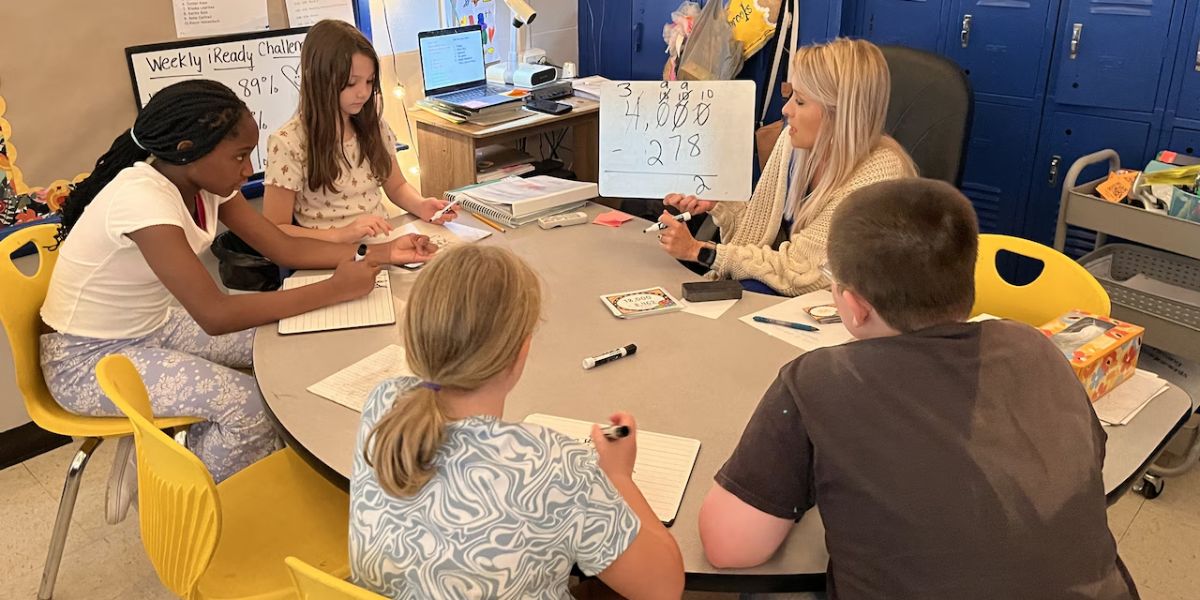Alabama’s Plan: $11 Billion Education Budget With 2% Raise for Teachers
Alabama lawmakers got their first look at changes that would be made to Gov. Kay Ivey’s budget plan for education on Thursday. A committee in the House is looking at a state education budget that would cost $11 billion. This budget could give teachers 2% raises, give more money to higher education, and give more money to private schools.
The House plan includes three different amounts of money: a normal budget of $9.3 billion (HB145) and two extra funds totaling $1.7 billion. The amount of $11 billion is $300 million more than what Ivey suggested. It will cost $92 million to give school workers a 2% pay raise.
Danny Garrett, R-Trussville, is the chairman of the House Education Budget Committee. He said that the committee got a copy of the bill Wednesday night and that he thinks some changes could be made. Garrett said, “We’re still negotiating what we have here at this point.”
Garrett then went over the suggested changes with the committee members.
A record $9.3 billion, the same amount Ivey asked for, is included in the normal education budget for fiscal year 2025. The biggest change was that Ivey’s plan to spend $25 million on rural internet was canceled.
Garrett said, “Right now, we’re investing hundreds of millions of dollars in broadband all over the state, so this isn’t needed for this grant program.”
Garrett read off the names of at least a dozen programs and projects that would benefit from having that $25 million used differently.
- Money for gifted students
- A new pre-K pilot program in Montgomery
- A program to help young people become better leaders
- Liberty Learning is a program to help young people improve their character.
Garrett suggested adding $8 million to the extra money and using $11 million from the main budget to hire 200 assistant principals for schools with 300 or more kids. At the moment, a school needs 500 students to get state money to hire an assistant director. There will be an extra $8 million available as soon as politicians agree to it.
“That means we can hire the assistant principals this school year,” Garrett explained.
HB147, the second bill in the budget package, is an extra payment from the Advancement and Technology Fund, which has a sum of $1.75 billion right now. During last year’s budget process, lawmakers did not take any money out of the fund.
Garrett suggested taking $1 billion out of the fund to use this year. That is $300 million more than what Ivey suggested. The money would be split between K–12 and college.
As part of this raise, Garrett is moving $135 million that Ivey had set aside for K–12 school safety and technology out of a third appropriations bill, HB144. This bill would give away $651 million in extra tax money from last year.
He said, “A lot of that [A&T Fund] money can be used for what the governor set aside in the $651 million supplemental.” “The tech and school safety money can be used there if the system wants to.”
Garrett kept some of Ivey’s plan, like the $22 million for school nurses and $15 million for summer reading camps, in HB144, the $651 extra bill. It also sets aside $51 million for the 2025–2026 school year to pay for education savings accounts.
Next year, lawmakers plan to set aside another $50 million for school savings accounts, bringing the total amount already set aside to $100 million.
Garrett suggested making changes to Ivey’s plan for other projects, such as:
For example, Ivey wanted $50 million to replace old school buses, but only $20 million was given. He also wanted $30 million for a new school for healthcare sciences, $100 million for the community college system, and $210 million for four-year colleges and universities.
Twenty-one more line items were added to the House plan. They are as follows:
- $20 million to build a new statehouse,
- $40 million to give to community schools in the form of grants,
- $20 million for the K–12 Capital Grant Program of the Lt. Governor
- $7 million for public-private schools to spend on capital projects,
- $5 million for programs to help readers who are having trouble after third grade,
These amounts are $10 million for the American Village, $13 million for the Alabama Commission on Higher Education, and $5 million for the ReEngage Alabama project.
In 2024–25, a lot more kids who are in public schools will be able to get tax credit scholarships. From 2025–26 on, some Alabama families will be able to get tax credit grants worth $7,000.
People in the committee were given drafts of the proposed bills, but the public won’t be able to see them until they are officially passed, which Garrett said should happen on Tuesday.











